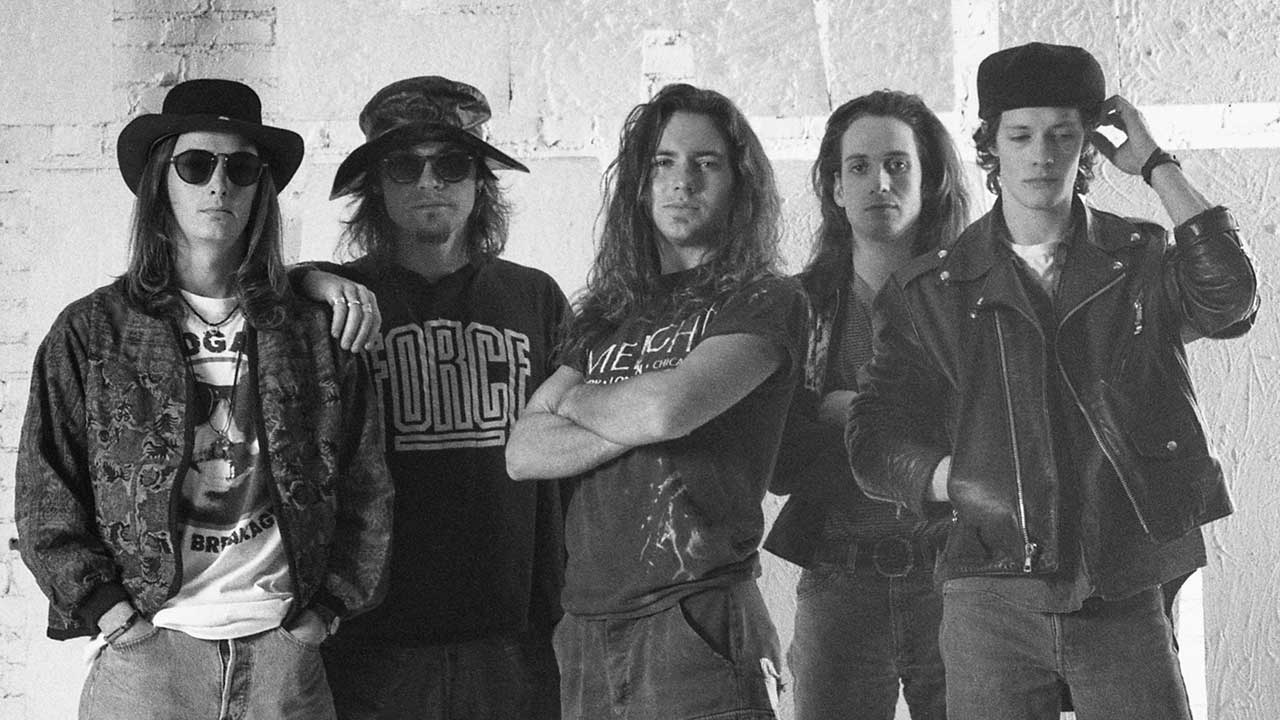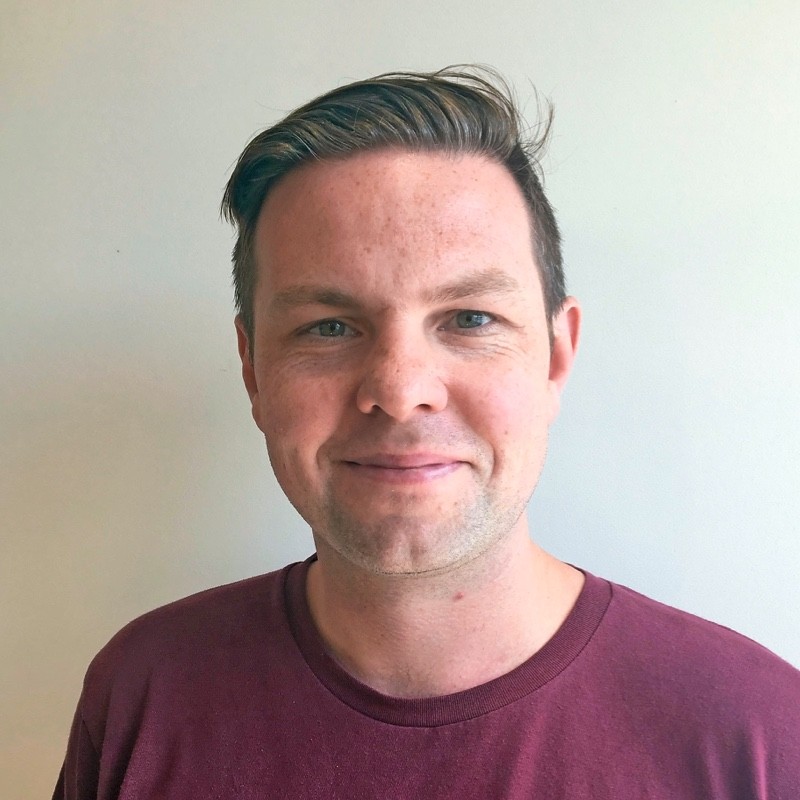When Eddie Vedder watches a music documentary, it’s never the early years or height of success that he’s interested in; he doesn’t want to see The Beatles at the Cavern Club, or The Who at the Marquee. The Pearl Jam frontman is curious about the period way, way after all that; he wants to know what his favourite bands were doing 20 years down the line – when there’s some scar tissue, when they’ve made it big and worked out where to go next, the risky left turns, the break-ups, the reunions. That’s what Vedder wants to dig into.
His own band turn 30 this year. Pearl Jam’s debut single Alive, an astonishing first release by any stretch of the imagination, came out in July 1991. Their first album, Ten, followed a month later. Who could have known what would happen back then? Not Vedder, nor guitarists Stone Gossard and Mike McCready, bassist Jeff Ament and then-drummer Dave Krusen.
At that point Pearl Jam were just another very promising rock band from the American Northwest – a region teeming with very promising rock bands. It didn’t take them long to get ahead of the pack, though, and now it’s difficult to imagine anyone else like them. They are one of a kind.
Since that first release in the summer of ’91, there has been success stretching way past what any of them could have dreamed of. Pearl Jam have sold more than 85 million albums, their songs going far beyond what something put together from some wood and strings and a man singing over the top has any right to do. Their music has become a pillar of rock culture.
There has been pain, too, and death, tragedy, fallouts, political wrangling and drummers – quite a few drummers, actually. But throughout it all, Eddie Vedder has held on to the panoramic perspective with which he viewed his heroes: what did they do next?
“Music ain’t a swimming pool, it’s an ocean,” the singer said in 2011. Vedder was sitting opposite me at Pearl Jam HQ, on the outskirts of Seattle. He was working his way through a box of American Spirit cigarettes and reflecting on the imminent release of the Pearl Jam Twenty film.
“Music is not contained,” he continued, “it moves. Even the business of music and digital, it’s always moving and the tides are changing. It’s more interesting now to see how a band navigates an open field of music.”
All the looking back required for Cameron Crowe’s career-spanning documentary had the nostalgia-wary frontman feeling uneasy. His band were about to enter their third decade, and Vedder wanted to face forwards again. He was more interested, he explained, in what Radiohead or Guided By Voices frontman Bob Pollard were doing than in gazing back to rock’n’roll’s Big Bang. He wanted to know what the future looked like.
In 2021, Pearl Jam are still huge. They feel more important than ever too. It’s not just in the fact that they still put out great new records (although their output has slowed somewhat), or even in their euphoric, communal live shows. Pearl Jam seem to go beyond that. Their very existence feels like a reassuring thing.
“We’re into long-term relationships in this group,” Vedder explained, “in our personal lives, with each other as bandmates, and with the audience. That’s a long-term relationship right there.”

Seattle, 1990. The city’s tight-knit music scene is still reeling from the death of one its favourite and most flamboyant adopted sons, Mother Love Bone frontman Andrew Wood.
Stone Gossard, one of his devastated bandmates, is dealing with the loss in the only way he knows how: making more music. He has joined up with his friend and fellow guitarist Mike McCready and the two are holed up at Gossard’s parents’ house, fleshing out early versions of the songs that would become Alive and Even Flow. The former is a leftover from Mother Love Bone. Originally titled Dollar Short, the glam-rockers had even played it at a show in Portland, Oregon but never got round to recording it.
“When Andy passed away we hadn’t done anything with that song,” Gossard recalled in 2013. “It stayed in my pile of demos. I liked the way it had this nice minor/ major shift in it.”
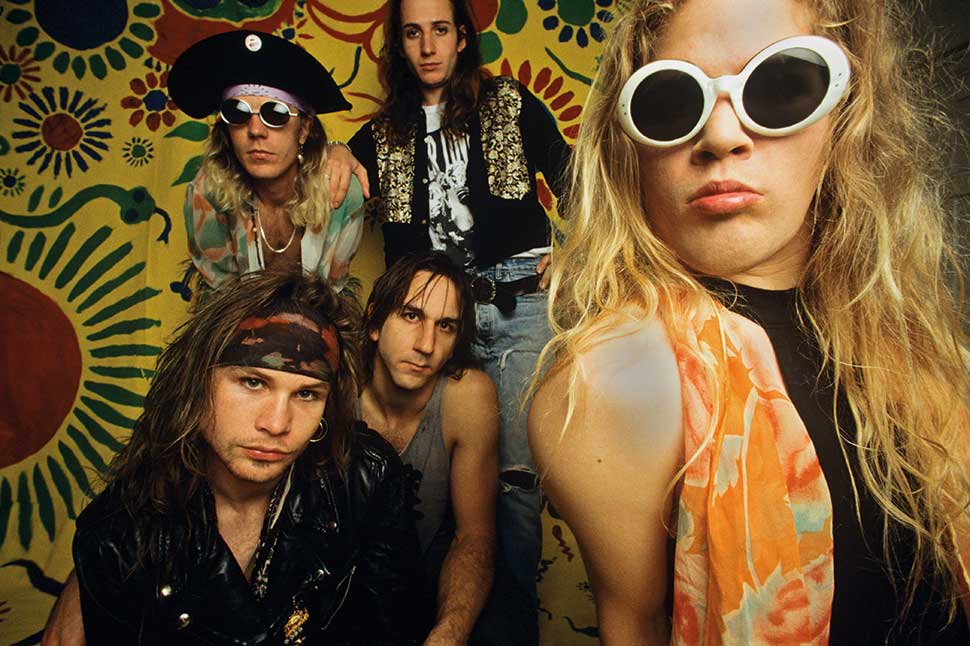
Preparing to get the songs down on tape, McCready persuaded Gossard to enlist his Mother Love Bone bandmate Jeff Ament on bass, and Soundgarden’s Matt Cameron offered his services on drums. They emerged with a set of instrumentals titled the ‘Stone Gossard demos’, and set out to find a vocalist.
There wasn’t exactly a local shortage – Seattle was in the midst of an ‘everybody’s in a band’ boom, and Gossard and Ament’s stock was high after their work in Mother Love Bone and grunge prototype rockers Green River. But singers were tried out and not invited back. The problem was not finding a vocalist, it was finding a vocalist whose voice they liked.
Twelve hundred miles south, in the warmer climes of San Diego, Eddie Vedder was at a creative loose end. His band Bad Radio had recently split up, and he was beginning to wonder if that ship had sailed.
“I gave myself a timeline,” he said in 2011. “I don’t think I ever would’ve sold my guitar – as Pete Townshend would say, never spend your guitar or your pen – but I would be resigned to being the assistant manager of a drug store.”
As fate would have it, Vedder’s career in the local chemist was not to be. Gossard’s demo landed in his lap after a mutual friend, former Red Hot Chili Peppers drummer Jack Irons, told Gossard and Ament to send a copy to the surfer dude singer he’d become pals with.
Vedder liked what he heard. He went surfing with the songs lodged in his head, and wrote the lyrics as he rode the waves. He got home, spent a few hours laying down his vocals, and sent the tape back. These days he finds the flippancy with which it happened a little terrifying to look back on. “It changed our lives in infinite ways, it changed everything. It was the best five hours I ever spent,” he said.
Hearing something promising in the raw, yearning vocal over a trilogy of tracks – Alive, Once and Footsteps – that Vedder had now rechristened the ‘Momma-Son’ demo, Ament and Gossard got him up to Seattle for rehearsals. In a dingy practice room known as Galleria Potatohead by its patrons, Ament knew immediately that they were on to something.
“The minute we started rehearsing, and Ed started singing – which was within an hour of him landing in Seattle – was the first time I was like: 'Wow, this is a band that I’d play at home on my stereo,'" he told Spin magazine in 2001. “What he was writing about was the space Stone and I were in. We’d just lost one of our friends to a dark and evil addiction, and he was putting that feeling to words. It’s like when you read a book and it’s describing something you’ve felt all your life.”
McCready remembers Vedder staying in the rehearsal room, staying up all night writing lyrics. “We’d show up and there was another song,” he said. “I’d never been in a situation where it clicks.”
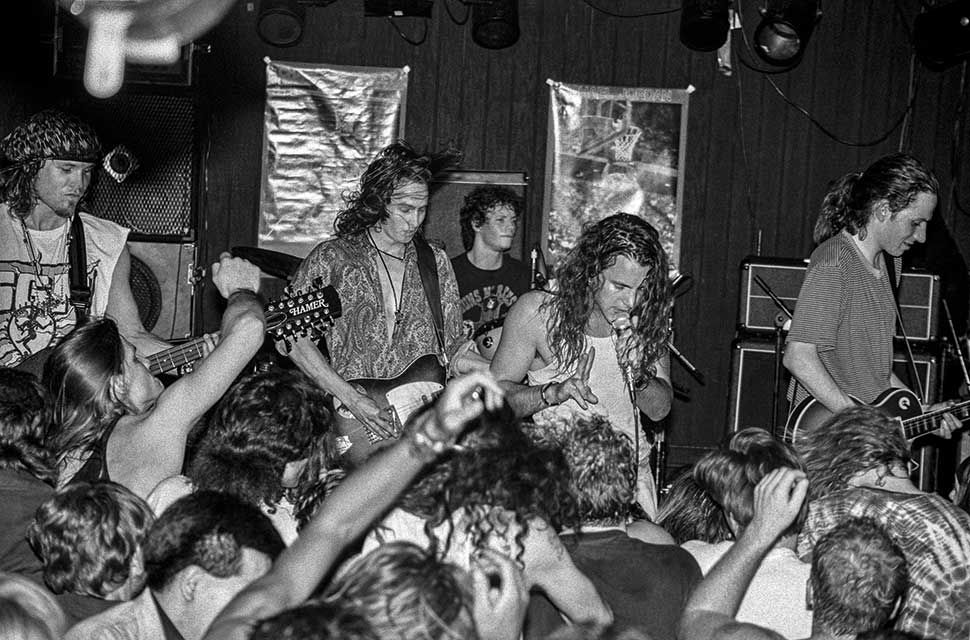
The group, who now also included recently added drummer Dave Krusen, wrote and rehearsed for six days straight. On the seventh they played their first gig, at Seattle’s Off Ramp Café.
It was October 22, 1990, and they called themselves Mookie Blaylock, after the New Jersey Nets basketball player. Their set lasted for 40 minutes and eight songs. Five of the songs would appear on Pearl Jam’s debut album, Ten.
Their first week set a tone for quick progress that would become a hallmark of the group’s early days. Over the next few months the quintet honed their lithe rock anthems playing a series of shows in Seattle that won over locals as well as attracting admirers from further afield.
On the eve of signing with Epic Records, and perhaps sensing something big on the horizon that a basketball player might take exception at being forever associated with, Mookie Blaylock changed their name. Over the coming years Vedder would spin an entertaining yarn about how their new moniker came from his grandma ‘Pearl’s home-made peyote ‘jam’, but the truth was a little more mundane: ‘Pearl’ was suggested by Ament at a rehearsal.
Not long after, some of the band had gone to see Neil Young at Nassau Coliseum, New York, and discussed afterwards how every song had turned into an extended jam, and – boom! Pearl… Jam. They had their name.

In March 1991, Pearl Jam began recording their debut album at London Bridge Studios in Seattle’s Shoreline neighbourhood. McCready remembers Gossard and Ament, already seasoned studio hands, taking the lead. “Me and Eddie were along for the ride at that time.”
An early version of Alive that captured the track’s expansive sway was already in the bag, but other tracks took a little more work – Even Flow took more than 30 takes. Vedder, still new to Seattle, threw himself into making the record in order to distract himself from the unfamiliar surroundings.
“It was my first chance to make a real record,” he said in 2001, “and I was pretty damn focused. I was in a new town, so that batch of songs replaced my friends and family.”
Titled Ten, in a nod to the shirt number worn by Blaylock, Pearl Jam’s debut album was released on August 27, 1991. It is now rightly regarded as one of the greatest debut albums ever. But its success was a slow-burn, taking until halfway through 1992 for the spark to ignite. By that point, a period of intense touring, both at home and in Europe, had showcased their exhilarating live show and attracted an ever-growing diehard crowd.
Then MTV put the promotional clip for Jeremy, a song about a school student who shot himself in front of the class, on heavy rotation, and Pearl Jam were almost instantly lifted to a dizzying altitude of success. Vedder, in particular, started to feel light-headed at their new surroundings.
“When Jeremy happened, Sony Music CEO Tommy Mottola was saying: ‘You have to release Black,’” the band’s manager Kelly Curtis said in 2001. “And the band was saying: ‘No. This is big enough.’ We turned down inaugurals, TV specials, stadium tours, every kind of merchandise you can think of. I got a call from Calvin Klein, wanting Eddie to be in an ad. I was proud of the band, proud of their stance.”
Not everyone felt compelled to applaud, however. Some of their hometown peers had begun to air their grievances with Seattle’s newest success story. Kurt Cobain claimed that Pearl Jam were “pioneering a corporate, alternative and cock-rock fusion”, igniting a feud that would eventually be settled with a slow-dance between Cobain and Vedder at the 1992 MTV Video Music Awards.
When Vedder looked back to that initial burst of success in 2011, he said it was all about just getting through it intact. “I knew it wasn’t graceful, the way we were handling it,” he said. “At the same time, it’s like being graceful in an alley fight. You’re just trying to get out of there alive. We held tight to each other and held tight to music. We were always thinking about not the next record, but what would it sound like in five records.”
The image on the cover of Pearl Jam’s second album, Vs., is an angora goat on a farm in Hamilton, Montana, with its face pressed through a wire fence. Ament explained that the image represented how the band had come to feel like slaves. Grunge had become a worldwide success, and a ‘thing’, and fashion magazines and retailers had taken note. Everyone wanted a piece of the pie. Led by a resolute Vedder, Pearl Jam started to back away.
“The whole scene was heavily co-opted, things were changing around us,” he said. “They started selling whatever people were wearing in the Northwest, corduroy jackets going for thousands of dollars. I was living in a basement or a one-bedroom flat. It was all very small. But around us it was getting insane.”
Gossard says Vedder pushed forwards on the idea that getting bigger wasn’t going to make any of them happier. “At that time, everybody was trying to figure out what Pearl Jam was to them,” said the guitarist. “Ed was trying to come to grips that he’d started as this shy, quiet guy and was now this guy that everybody recognised on the street.”
Unfortunately, in some ways, for all concerned, Vs. made Pearl Jam huge. The band had decided not to make any accompanying music videos, do minimal press, and even went as far as giving away a bonus live cassette of the track Animal in the UK so that the single release of Go was ineligible for chart inclusion. But the tactics did little to dampen the album’s impact. A searing, vital record that mixed furious, urgent rock with acoustic balladry, it cut through their promotional silence and sat at the top of the Billboard 200 chart for five weeks, and set a record for the most copies of an album sold during its first week.
Its success only seemed to ramp up growing tensions in the band. Things came to a head while they toured Vs. at the same time as dealing with the shock of Kurt Cobain’s death and writing and recording their next record, Vitalogy.
“Vitalogy was the first record where Ed was the guy making the final decisions,” Gossard told Spin in 2001. “It was a real difficult for me, because I was having to give up a lot of control.”
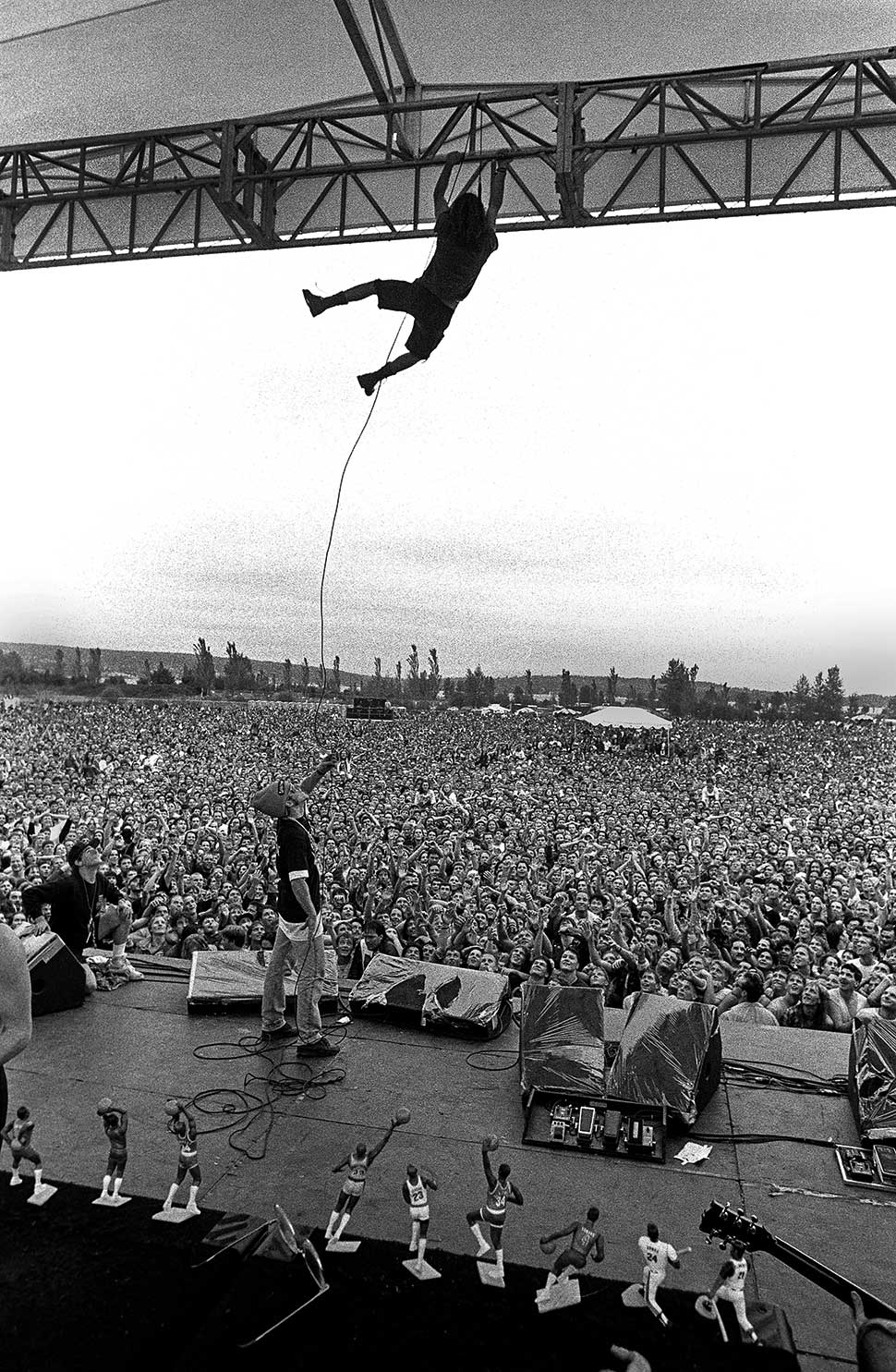
Despite the internal wranglings, Vitalogy featured some of the band’s finest moments: the fragile beauty of Nothingman; Last Exit’s stripped-down stomp; the gothic march of Immortality; the way Better Man morphs from hushed slo-mo ditty into a defiant anthem.
The strength of the music couldn’t paper over all the cracks, though. Drummer Dave Abbruzzese, who’d played on Vs. and most of Vitalogy, was fired and replaced with former Red Hot Chili Peppers drummer Jack Irons, the man who’d helped them find Vedder in the first place. There were now other, external, pressures to deal with too.
Shocked by the service charges being added to the prices of tickets for their shows, the band had gone to war with ticketing giant Ticketmaster. In 1994 they testified to US congress that Ticketmaster were operating as a monopoly in the live music industry, and followed up by cancelling a run of shows that were meant to take in Ticketmaster-controlled venues. When it came to the US tour to support Vitalogy in 1995, they booked their own venues instead.
“We got to see up close how things work in this country,” Vedder said in 2011. “We got to be crushed by a corporate giant right up close.” He reflected that while it hadn’t killed Pearl Jam, it had certainly robbed them of their idealism. “We thought and believed – and probably still do – that we were fighting the good fight.”
He looked back on that 1995 tour with exasperation. “We spent more time on where to put the portaloos than when it came to doing the set-list,” he sighed. “You couldn’t think straight for link fences and barricades and safety issues and how many roads in, how many roads out, parking. That became part of setting up live shows. And then those were what the reviews were about! It was ‘if they’d done it with Ticketmaster, there wouldn’t be this hassle’. We had to bring the focus back to music and playing.”
For the rest of the 90s, Pearl Jam did exactly that. They got their head down, played music, toured a lot and rarely got involved with the any of the rigmarole around it.

If Vitalogy put the indicator on, then 1996’s No Code album is when Pearl Jam really went off-road. It was heralded by a single, Who You Are, that didn’t sound like a single at all, a loose, hazy track built around Arabic-flavoured melodies and Jack Irons’s textured drum rolls.
Pearl Jam were still alive, all right, but they sounded nothing like their 1991 selves. No Code built on Vitalogy’s formula (the formula being that there was no formula) of delicate introspection, snarling heavier numbers and peculiar experimentation. Pearl Jam were saying that they still wanted to be a big, important band, but their version of a big, important band.
Vedder’s retreat from the frontline had more to do with an aversion to commercial success. The frontman had been plagued by a stalker, and chronicled the experience in No Code’s punky Lukin. He found himself afraid to leave the house, and eventually moved. Fame was not for him, he decided. “I felt that with more popularity, we were going to be crushed, our heads were going to pop like grapes,” he told Rolling Stone’s Brian Hiatt in 2006.
To Vedder, the term ‘No Code’ meant ‘Do Not Resuscitate’. If this was to be the way that Pearl Jam went down, he thought, then they were going to do it on their own terms. Jeff Ament calls this era of Pearl Jam their “blackhole period”. The band made some solid records, each with tracks that would light up their set-lists for years to come – Given To Fly and Do The Evolution on 1998’s Yield, Of The Girl, Insignificance and Grievance on 2000’s Binaural – but sales had dipped and some members struggled to get their heads round the group’s uncertain status.
“No matter what, you’re going to have a time when some people are going to lose interest in you,” Gossard said in 2001. “We could still sell out live, which took out some of the ego sting. But there was definitely a sense of us not delivering the goods in the way that the masses expected from us
Guitarist Mike McCready felt the same, worried that Pearl Jam had taken too much of a step back and had blown their chance to be the generation-defining group he felt they could be. It wasn’t until he looked back years later that he realised they took the long way round because that was the only route that would work. “Maybe we alienated some fans throughout the years, which I feel bad for, but it made us survive as a band,” he said in 2006.
As a new millennium was ushered in, things seemed to have settled down for Pearl Jam. A balance had been achieved, a sense that they could still connect on a big scale without compromising any of their hardened morals. New drummer Matt Cameron, who was also their old drummer, summed it up best when he said: “Pearl Jam are kind of in a special league. Punk-rock arena rock is the way they approach it.” But the year 2000 would be one of the worst in the band’s history.

Pearl Jam were a month into the tour to support Binaural when they arrived in Denmark to headline the Orange Stage at the country’s famous Roskilde festival, 19 miles outside of Copenhagen, on June 30, 2000. On that windy, rain-drenched evening, a huge crowd had gathered to see the band.
Vedder had already asked the crowd to take a step back and make space. Then disaster struck. There was a crush, and nine people died. It was a tragedy that changed everything.
“The hardest moment was the day of and the day after Roskilde,” Vedder told me in 2011. “You couldn’t go thirty seconds without thinking about it. After a week you could maybe go a minute without thinking about it. After a month you could maybe go three minutes… You were constantly brought back there.”
Vedder recalled staying at Sonic Youth’s Kim Gordon and Thurston Moore’s house soon after, and the then-couple’s young daughter helping him deal with the pain.
“She was six or seven at the time,” he said. “She was such a bright light. She didn’t know about Roskilde, and I wasn’t gonna explain it to her. She’d do a drawing for me, or we’d play ping-pong. She’ll never know what a cool thing that was.”
Vedder will remain forever grateful to the friends who reached out at that point. “I was in a fuckin’ fetal position the day after,” he said. “I got a call from Pete Townshend, Roger Daltrey, and talked to Tom Waits later. They were important phone calls, and god bless them for staying on the phone, because I was pretty despondent.”
At one point he said to Townshend: “Why did this happen to us?” “Because you can take it,” Townshend said. “It made me think we could,” Vedder reflected, “and that he had faith in us that we could.”
Some members of Pearl Jam, particularly Gossard, wondered if the band could continue after such a horrific incident. Vedder thinks they became closer than ever as a group because of it.
“We hadn’t thought about this with our name,” he said, “but the pearl is the little organism that has taken the shit, taken the bad stuff, and turned it into something beautiful. Maybe that’s part of what we’ve been able to do.”
After the band had completed the Binaural tour, Vedder disappeared for a year. “I had to live among nature,” he explained. “I went almost nine days without saying a word at one point. I did a solitary process that I felt like I had to go through. I felt like any kind of avoidance would’ve come back to haunt me and there would have been deeper issues, ready to strike at any time.” After a period of deep soul searching, Vedder came home. The next day, Pearl Jam began work on Riot Act.
The tragedy at Roskilde diverted the course of Pearl Jam’s career, and their next record set a blueprint from which their ‘second act’ emerged. Gone was the inward-looking contemplation of those mid-to-late-90s records; Riot Act was outwardly facing. Released in 2002, it arrived with an emotional, joyous single in I Am Mine, and they even made a video to go with it.
Riot Act and their 2006 self-titled eighth album suggested Pearl Jam were back in the midst of a creative purple patch. The release of Backspacer in 2009 confirmed it. Produced by Brendan O’Brien, it was their best since the early 90s, a perfect blend of singalong anthems and intricate deep cuts. For Vedder, it was a record that made all the emotional hurdles worth it.
After years where it felt that Pearl Jam had become a sort of cult band – admittedly, a pretty big cult band – now they were huge again, playing some of their biggest ever shows. It was their first album to top the US chart since No Code.
“Backspacer was a really good record,” Vedder said in 2011. “We were all happy with the way it came out, and we reached a certain amount of people and they were good songs to play live.” He had finally grasped how to appreciate mainstream success.
“I think you can enjoy it for a day, and get back to work the next,” he said. “I wish I’d known a little earlier that it’s more about the process of getting to where you’re aiming to go, cos it’s not about the destination, it’s about the journey.”
In the same way that Riot Act energised Pearl Jam in their second decade, Backspacer seemed to give them the confidence to take time in their third. There have been only two records since then: 2013’s Lightning Bolt and last year’s Gigaton. They take a moment these days, working on other projects and coming together when it feels right.
“I think we went into this with the idea that we wanted to be brothers in a band,” Gossard told Sirius XM in an interview ahead of Lightning Bolt’s release. “And part of what we were attracted to is that being in a band is like a commitment you kind of have to make. It’s built into our DNA and it’s carried us through a lot of times where it’s been more difficult.”
They are still a band leading by example. They were one of the first to pull their tour dates when the pandemic hit last year, as the US government dithered about how to respond.
“We wanted to be responsible,” Gossard told Tidal. “You live and fight another day. Trying to get in ten shows before a tour was cancelled didn’t make much sense to us.”
Gossard felt proud that the band were in a position to take a stance, but he’s itching to get back out there. “Having not been able to play for so long, we’re never going to look at a live show the same way again.”
Before we finish, how about a quick tour of Pearl Jam’s HQ? It’s a nondescript, two-storey warehouse that sits on a corner in the industrial district of Seattle, a few miles from Sea-Tac airport. But inside there’s nothing nondescript about it.
Downstairs there’s the Ten Club, a hive of activity, dispatching merchandise orders to fans across the globe. Walk through that and you enter a vast room filled with row upon row of flight cases, a perfectly ordered ecosystem of Pearl Jam inventory. In the odd space that isn’t taken up by a guitar or a drum kit, there are parts of Pearl Jam stage props from over the ages.
Against a wall sit the giant letters from the cover of Ten – ARL JAM. “I think Ed and Stone have the P and E,” our guide George (who also has a proper job as Vedder’s guitar tech) explained. Head through there, past the rehearsal space, up the stairs – not the ones that lead to the band’s management offices, the other ones – and you come to the comfy lounge area. This is where Vedder greeted me in 2011.
He was in friendly, charismatic form that day, dressed how you imagine he always dresses – like a man who might on the off-chance have to embark on an impromptu hike. There was no doubt he’d earned the right to be comfortable in his own skin.
“Before it felt like we were five little boats all tied together,” he said, “and now it feels like it’s one big boat and we’re all on it, and we take turns at the wheel and we take turns in the engine room and we have a good understand of being crew members and captains and sharing the load.”
He thought that, with hindsight, the band were galvanised by those early years. “On that level, when people start dying,” he said – “and it wasn’t just Kurt, there was Stefanie from 7 Year Bitch, Layne years later – it brings you together.”
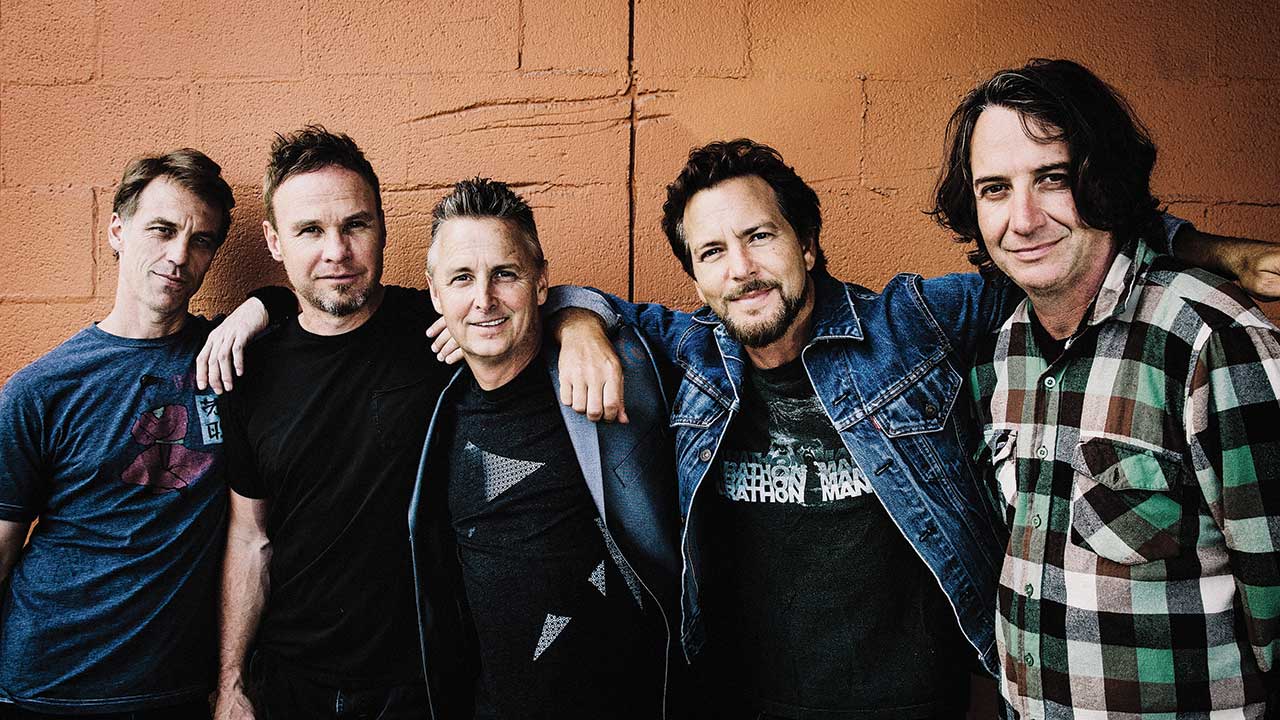
The loss of Chris Cornell, an early mentor to Vedder, in 2017 would have been another huge blow. But Pearl Jam keep finding new ways to cope, to overcome and inspire. Walking around their base, their own little world all housed under one roof, makes you realise that they’d achieved what they set out to do. This place was exactly the sort of thing they were aiming for when they were turning down pant commercials in 1991.
“We’ve always looked out for one another,” Vedder concluded. “We want to make each other proud – I want them to be proud of their guy, and I’m proud of mine. It shouldn’t be that hard. We’re a fucking rock band!” They’re into long-term relationships, in their personal lives, with each other as bandmates and with their crowd. That’s how Pearl Jam keep turning the page.
